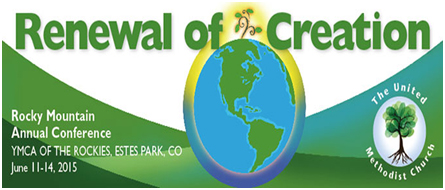Religions for Peace USA: Member Profile
by Suzy Lamoreaux
The United Methodist Church (UMC) was one of the three founding religious communities of Religions for Peace, along with the Unitarian Universalist Association and the Rissho Kosei Kai Buddhist community. Occasionally, Religions for Peace USA gets the chance to interview a leader from one of our member communities and highlight their good work. Suzy Lamoreaux, project coordinator of Religions for Peace USA, sat down with Rev. Dr. Youngsook Kang, director of Missions and Ministry for the Rocky Mountain Conference of the UMC.
* * *
Suzy Lamoreaux: The United Methodist Rocky Mountain Conference covers the Mountain Sky area, which is geographically huge. I understand the Conference includes 400 United Methodist Churches whose worshippers come from all different social, economic, ethnic, and cultural backgrounds. What are the benefits, and what are the difficulties?
Rev. Dr. Youngsook Kang of the United Methodist Rocky Mountain Conference
Youngsook Kang: Thank you for noticing the diversity! We are indeed diverse peoples living in a diverse geography. A friend of mine, a writer, describes the Mountain Sky area this way: “The Rocky Mountains connect us north to south, running through our states like a spine. They’re ‘the backbone of the world,’ says the Blackfeet tribe. The four states in the Mountain Sky area – Montana, Wyoming, Utah, Colorado, and a portion of Idaho – stretch across the Continental Divide like a woven blanket thrown over a horse’s back. A day’s drive can cross high and dry plains, sheer mountain ranges, red-rock formations, and salt flats.”
Our demographics have changed and are continuing to change across the landscape of our region. Our population ranges from the Native Americans who have lived on this land for thousands of years to the new immigrant communities, who have just moved to the area. One important demographic that is growing especially quickly is the Hispanic population. My biggest challenge as director of Mission and Ministry of the Conference is to place this challenge in front of us: How do we equip ourselves in reaching out to multicultural ministries?
How do we welcome and include diverse group of people into local churches, district and conference leadership? What are our inclusive policies and procedures?
I formed a group of dozen leaders in the conference to learn to be trainers for intercultural competency. Intercultural competency is the capability to shift cultural perspectives and adapt your behavior to cultural commonality and difference.
This includes interfaith relations. For me, interfaith dialogue has to do with seeking common ground for God’s purpose in history and engaging neighbors of other faith traditions in a common cause to serve justice and righteousness.
Suzy: I know you hold an annual conference with a new topic each year. The 2015 conference, entitled “Cultivating the Tree of Life: Renewal of Creation,” will focus on the environment. What made RMC choose this theme?

Youngsook: “Renewal of God’s Creation” was inspired by a pastoral letter from United Methodist bishops titled “God’s Renewed Creation: Call to Hope and Action.” The opening sentence reads, “God’s creation is in crisis. We, the Bishops of The United Methodist Church, cannot remain silent while God’s people and God’s planet suffer. This beautiful natural world is a loving gift from God, the Creator of all things seen and unseen. God has entrusted its care to all of us, but we have turned our backs on God and on our responsibilities.” That inspired our conference theme for 2015.
Suzy: Could you tell us more about more about what annual conferences do?
Youngsook: In the United Methodist Church system, the Annual Conference means two things. It is a structural unit of the denomination. And it is an annual meeting where we fellowship, worship, and do our business. So annual conference is one of the most important structures of the Church. Its purpose is making disciples of Jesus Christ for the transformation of the world, equipping local churches for ministry, and providing a connection for ministry beyond the local church.
Suzy: What do you hope is achieved at this year’s annual conference?’
Youngsook: At each Annual Conference session we hope to tell the story of how we have cultivated abundant life throughout the Rocky Mountain Conference region and beyond. This year we are telling the story of how we have embraced environmental problems and exercised our stewardship of God’s creation. So I hope the leaders at the Conference are inspired to return home and help their churches, their people to face environmental issues and continue to be responsible stewards of God’s creation. I also hope that people develop an awareness of how our faith tradition teaches us to think about and engage in issues of our day such as climate change, food, and justice.


